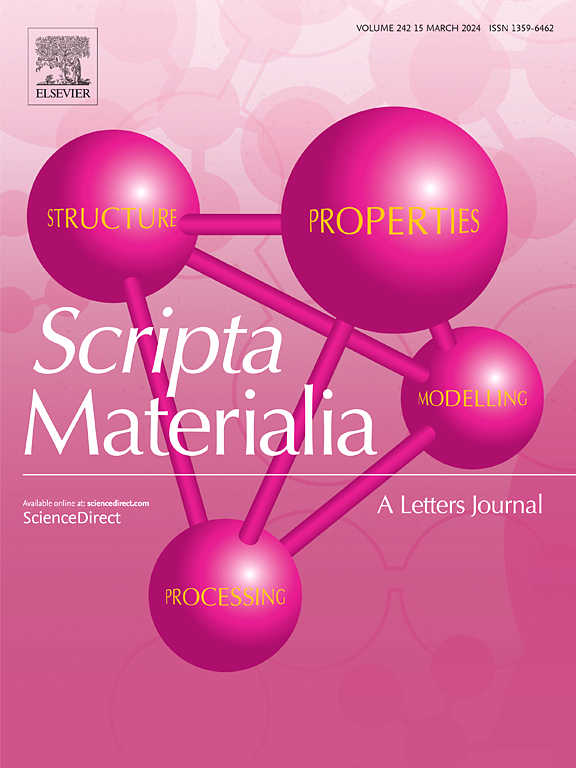A bake-hardenable Mg-Zn-Sn-Ca alloy addressing strength-corrosion trade-off via solute segregation to dislocations
IF 5.3
2区 材料科学
Q2 MATERIALS SCIENCE, MULTIDISCIPLINARY
引用次数: 0
Abstract
Increasing dislocation density is conducive to improving strength of Mg alloys, while the corrosion resistance would be considerably compromised because high-energy dislocations preferentially suffer severe corrosion. Herein, an appreciable flow stress increment of ∼43 MPa (from ∼191 MPa to ∼234 MPa) with no sacrifice of corrosion resistance could be achieved in solutioned Mg-2Zn-1Sn-0.5Ca (wt.%, ZTX210) alloy after 2 % pre-stretch and aging treatment. Even though introducing higher density of dislocations after 5 % pre-stretch, the aged alloy does not show deterioration in corrosion resistance compared to the solutioned counterpart. The reduced elastic strain energy around basal 〈a〉 dislocation cores by co-segregation of Zn, Ca and Sn atoms accounts for the inhibited adverse effect of dislocations on corrosion resistance. The solute co-segregation could also pin dislocation motion, thereby endowing alloy with excellent bake-hardenability. This work would provide new insights to fabricate strong and anti-corrosive Mg alloys.

求助全文
约1分钟内获得全文
求助全文
来源期刊

Scripta Materialia
工程技术-材料科学:综合
CiteScore
11.40
自引率
5.00%
发文量
581
审稿时长
34 days
期刊介绍:
Scripta Materialia is a LETTERS journal of Acta Materialia, providing a forum for the rapid publication of short communications on the relationship between the structure and the properties of inorganic materials. The emphasis is on originality rather than incremental research. Short reports on the development of materials with novel or substantially improved properties are also welcomed. Emphasis is on either the functional or mechanical behavior of metals, ceramics and semiconductors at all length scales.
 求助内容:
求助内容: 应助结果提醒方式:
应助结果提醒方式:


